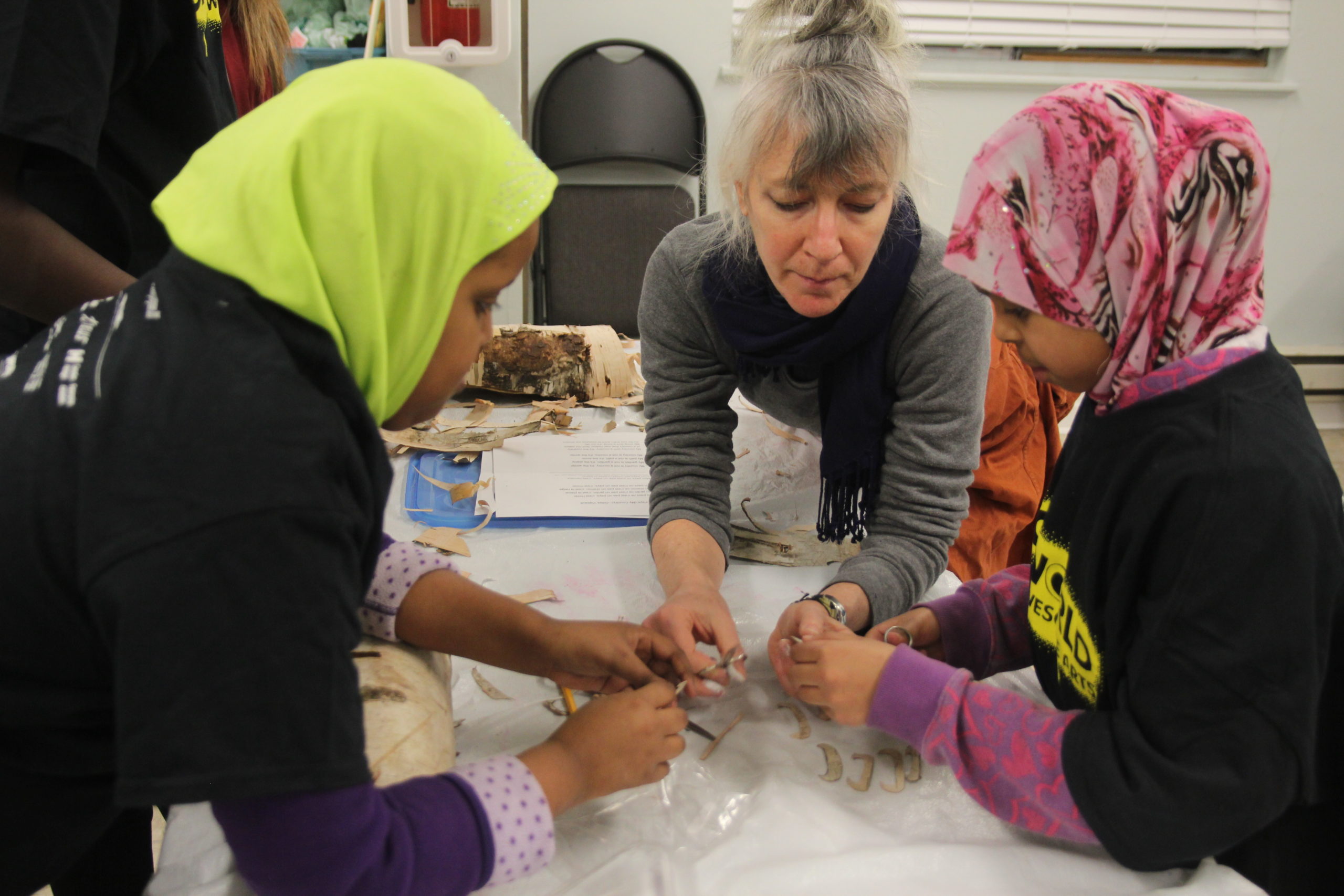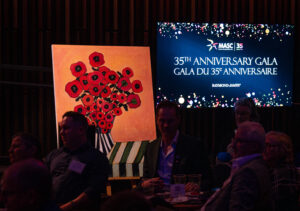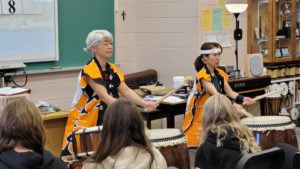Interview: Multimedia artist and cultural researcher cj fleury
By Jessica Ruano | January 5, 2022

This interview was originally published on Apt613.ca
cj fleury is a multimedia artist and cultural researcher, deeply interested in the role of art in contemporary society. Recognized for groundbreaking projects that bring the public into public art, some of her notable works include the women’s monument against violence in Minto Park, the series of sculptures along Preston Street in Little Italy, and Lightscape in Ottawa’s light rail transit system at Blair Station. In this interview, cj talks about designing an Artist-in-Residence program for the Bruyère organization and how access to creativity makes for a healthier society.

cj fleury’s Women’s Monument Against Violence. Photo: cj fleury website.
MASC: Congrats on your appointment as Artist-in-Residence at Bruyère! [Bruyère is an academic hospital organization in Ottawa with multiple sites including Saint-Vincent, Ottawa’s only complex continuing care hospital.] Can you speak to the importance of access to art in a hospital setting?
Studies show access to art, or participation in art activities, as proven determinants of physical and mental well-being.
In the residency’s research phase, where a sustainable program design is an end goal, we want to do four things: lower barriers to creative experiences; improve access to cultural production; create a sense of community inside and beyond Bruyère; and shine a light on patient abilities at a difficult time.
This quote from Dr. Carol Wiebe, musician and Bruyère’s Vice President of Medical Affairs, illustrates the importance of our program: “Many patients are hospitalized for months to years, with minimal access to culture. Days are focused on their medical issues and inabilities. Interaction with the Artist-in-Residence may be the first time a patient (family member or staff) has the opportunity to discover creativity. Patient creativity can also affect the way that hospital staff perceive the patient.”
The last point is similar to what is often noted in educational contexts.
MASC: This may be the first time a hospital participates in Culture Days (across Canada until October 25) since it was founded 10 years ago. What are some of the limitations and opportunities in working within this setting, particularly during COVID times?
Everyone knows the necessities of PPE and distancing; however, pandemic restrictions have provided a remarkable opportunity, one where I was able to develop deeper relationships with patients, which has led to greater art outcomes.
For the first year, I floated around the hospital, working in hallways, patient or meeting rooms. After a travel break and the quarantine, I was invited back into Saint-Vincent towards the end of April. The new regime called for a different approach: to work with patients, one at a time, in a newly freed-up studio space. Scheduling one-hour blocks (including cleaning between visits) gave us unprecedented opportunities for quiet, personal attention, creative growth, and production. A keen interest grew in what other patients were producing, their mark-making, shape, or colour choices. Ideas leapfrogged from one person to another and personal interests transformed into internet searches and even a bit of art history chat.

cj fleury works with a patient and his friends at Saint-Vincent Hospital. Photo: Liisa Vexler.
MASC: You’ve described the work you’re doing at Bruyère as “patient-centred” and “case-based.” How does this translate into how you plan your artistic activities, and the expectations you have for the participants and their level of participation?
Coming to the residency from decades of public commissions and community collaboration, key concepts are place-making, inclusive process, agency, and cross-sectoral development. One can look at current theory around design and structural inequality, or at inclusive designer Kat Holmes’ “mismatches as building blocks of exclusion,” and understand why citizens in healing centres have almost no access to culture. I believe health care is ripe for social-practice artists!
Planning activities are typical; medical guidance is available, if needed. Some delicate, on-the-spot moments require an adjustment to a particular challenge, be that through talk, technique, an assistive device, or rest. My skill sets, plus desire to learn and inspire, buttress the physical and mental capacities of the participants, and yes, it’s fun!
Art ideas stem from conversations about place, colour, season, or situation; mostly large collaborative installations. Expectations are not an issue. I’m amazed by patients’ engagement and appreciation, and how the art has played a role in community-building.

cj with one of her installations, Au coeur des lettres. Photo courtesy of MASC.
MASC: As a member of MASC, what do you gain through offering your workshops in schools and in the community?
MASC is a community unto itself and I’m a grateful member. They are a nourishing framework for connecting with artists and educators who value everything art has to offer.
Sensitive to the unique gifts of each of their artists, MASC is incredibly supportive in terms of shining a spotlight on what we have to offer, and helping us to best express that in their annual print and online catalogues: no small feat.
I’m an artist who wants to tailor almost every session to the needs or vision of the client, to create unique experiences, to use novel materials at large scales, to feed the creative juices of a class, a school, or a community. And whether it’s a single day or a six-week project, MASC has worked with me to meet the technical and material logistics, so that I can put the best energy into creative work with participants.
During Awesome Arts 2018, I worked with a group of children from the Lowertown Community Resource Centre’s after school program to create Cedar Art. Another memorable MASC residency with St Luke’s Elementary School students, many of whom were connected to events of the Rwandan genocide, explored ideas of homage, peace, and reflection through public art spaces.

cj fleury also loves working with children. Photo courtesy of MASC.
MASC: Why do you think it’s important for our local community to have access to professional artists?
At almost every school session, one or a few students approach me to talk about parents that don’t support (or understand) their creative aspirations… or even their desire to explore the avenues through which these interests could be channelled. Too many adults hold outdated ideas about “what artists do,” how hard they work, and underestimate the depths of artists’ concern for a just society, the environment and, importantly, the powers of imagination.
Professional artists are like “sensors.” They hold worlds of thought and possibility. Having live access to these people and their practice brings quality creative opportunities to everyday life, where attendees or participants can have rich experiences and exchanges with performers, writers, makers of 2D and 3D creations, intimate or immense.
I can’t say enough about how lucky I am to have been raised in a creative household, by parents that exposed us to all the arts and believed in the power of imagination
Latest News
View All Articles



